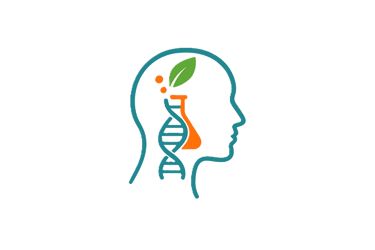Top 7 Biomarkers for Energy & Stress You Need to Test
Team Alpha
10/6/20255 min read


If you’re juggling a demanding job, family and high-performance goals, chronic low energy, brain fog and stress aren’t just annoying — they erode productivity, mood and long-term health. The good news: many of those complaints show up in measurable biomarkers. Testing the right panel gives you targets to optimize, track progress, and make decisions that move the needle.
Below are the top 7 biomarkers that consistently appear in the literature as linked to energy, cognition and stress — what they measure, how researchers quantify them, typical reference notes and practical ways to improve them.
1) Cortisol — the primary stress hormone (timing matters)
What it measures: HPA-axis activation; how the body responds to stress.
How researchers test it: Morning (awakening) serum or salivary cortisol and diurnal curves (multiple samples through the day). Many studies use salivary cortisol because it’s noninvasive and tracks free cortisol. Single morning cortisol and the cortisol awakening response (CAR) are common metrics. MDPI+1
Why it matters for energy: Chronically elevated or flattened cortisol rhythms are linked to fatigue, poor recovery and cognitive problems. Acute spikes are normal; it’s the persistent dysregulation that predicts burnout and reduced resilience. PMC+1
Typical values / interpretation: Labs differ; clinicians look for abnormal patterns (e.g., high morning cortisol or lack of decline across the day) rather than a single universal cutoff.
How to improve it: Sleep hygiene, stress-reduction practices (mindfulness, HRV biofeedback), consistent exercise and dietary timing. Medical approaches exist for specific disorders. MDPI
2) High-sensitivity C-reactive protein (hs-CRP) — low-grade inflammation
What it measures: Systemic inflammation — a low-level inflammatory state that commonly accompanies fatigue and brain fog.
How researchers test it: hs-CRP blood test (mg/L). Many fatigue and post-viral studies use hs-CRP as an objective inflammatory marker. PMC+1
Why it matters for energy: Higher hs-CRP correlates with increased fatigue and decreased cognitive function in multiple cohorts; reducing chronic inflammation often improves energy. PMC
Typical ranges: <1 mg/L (low), 1–3 mg/L (moderate), >3 mg/L (higher cardiovascular/inflammatory risk). Persistent elevation warrants further workup. PMC
How to improve it: Weight loss if needed, Mediterranean diet, exercise, sleep and treating underlying inflammatory drivers (sleep apnea, dental infection, metabolic syndrome). ScienceDirect
3) Hemoglobin A1c (HbA1c) & glucose regulation — metabolic energy stability
What it measures: Average blood glucose over ~3 months (glycation of hemoglobin). Continuous glucose metrics (CGM) add dynamic insight.
How researchers test it: Lab HbA1c (%), fasting glucose, and CGM metrics like time-in-range. Many studies link poorer glycemic control to fatigue and cognitive complaints. PMC+1
Why it matters for energy: Even subclinical dysglycemia (higher normal-range HbA1c) is associated with lower energy and worse mental stamina. Stable glucose = steadier energy and focus. PMC
Typical cutoffs: Normal <5.7%, prediabetes 5.7–6.4%, diabetes ≥6.5%. For performance-focused individuals, lower within-normal values are generally desirable. PMC
How to improve it: Reduce refined carbs, prioritize protein in meals, strategic exercise (post-meal walks), and consider time-restricted eating or CGM-guided tweaks. PMC
4) Vitamin D (25-OH vitamin D) — mood, cognition & energy support
What it measures: Vitamin D status — involved in brain function, immune regulation and mood.
How researchers test it: Serum 25-hydroxyvitamin D (ng/mL or nmol/L). Trials and meta-analyses examine cognition and fatigue outcomes versus baseline deficiency. PMC+1
Why it matters for energy: Low vitamin D is linked with fatigue and poorer cognitive outcomes in observational studies; some RCTs show cognitive or mood benefits when deficiency is corrected. PMC+1
Typical ranges: Deficiency commonly defined <20 ng/mL (50 nmol/L); many clinicians aim for 30–50 ng/mL for optimal health.
How to improve it: Safe sun exposure, dietary sources and supplementation (D3 dosing individualized by baseline level). Monitor levels after 8–12 weeks on treatment.
5) Ferritin & iron studies — oxygen delivery and mitochondrial energy
What it measures: Ferritin (iron stores), transferrin saturation, hemoglobin. Low iron limits oxygen transport and cellular energy.
How researchers test it: Serum ferritin (ng/mL), transferrin saturation (TSAT%), CBC. Research emphasizes ferritin thresholds and sex differences; some experts argue for higher ferritin targets (e.g., >50 ng/mL) in fatigued individuals. ASH Publications+1
Why it matters for energy: Iron deficiency — even without anemia — causes fatigue, poor concentration and exercise intolerance. Correcting iron can reverse these symptoms. PMC
Typical interpretation: Ferritin <30 ng/mL often indicates iron deficiency; clinical context matters (inflammation raises ferritin). Consider TSAT and CRP concurrently. PMC
How to improve it: Dietary iron, vitamin C to enhance absorption, oral or IV iron when indicated; recheck levels after therapy. Avoid self-treating without tests. ASH Publications
6) Thyroid panel (TSH, free T4 ± free T3) — metabolic rate & brain fog
What it measures: Thyroid function — TSH (pituitary signal) and circulating thyroid hormones that control basal metabolic rate.
How researchers test it: Serum TSH, free T4; some clinicians add free T3, reverse T3 and thyroid antibodies for fuller context. Studies link subclinical hypothyroidism and symptomatic treated hypothyroidism to persistent fatigue. PMC+1
Why it matters for energy: Low thyroid output slows metabolism, causes fatigue, weight gain, cognitive slowing and poor recovery. Small abnormalities within the reference range can still produce symptoms in some people. ScienceDirect
Typical ranges: Lab-specific; many clinicians use TSH ~0.4–4.0 mIU/L as reference but consider symptoms and free hormones in decision-making.
How to improve it: Treat hypothyroidism if clinically indicated, optimize nutrition (iodine, selenium), check for autoimmune thyroiditis if symptoms persist. Discuss with an endocrinologist if needed. PMC
7) Epigenetic age / telomere length — integrative stress and aging markers
What it measures: Biological aging and cumulative stress exposure — DNA methylation clocks (e.g., Horvath, GrimAge, PhenoAge) or telomere length assays.
How researchers test it: Blood DNA methylation profiling for epigenetic clocks; qPCR or southern blot for telomere length. Newer clocks link to functional capacity and mortality. Nature+1
Why it matters for energy: Accelerated epigenetic age and shorter telomeres are associated with chronic stress, inflammation and poorer resilience — useful as a long-term integrative metric rather than an acute diagnostic test. Nature+1
How to improve it: Lifestyle interventions (exercise, high-quality sleep, reduced stress, healthy diet) are associated with slower epigenetic aging in cohort studies — they’re not magic bullets but part of a systems approach. Nature
How to build a practical testing panel (for busy professionals)
Starter panel: Cortisol (saliva or morning serum), hs-CRP, HbA1c, 25-OH vitamin D, ferritin, TSH/free T4. Add epigenetic/telomere tests if you want a long-term aging baseline.
Timing tips: Do cortisol sampling across the day for rhythm info; fast for glucose/HbA1c/ferritin testing per lab instructions; recheck after 8–12 weeks of major intervention. ScienceDirect+1
Action steps if a marker is out of range (high yield moves)
High cortisol: Improve sleep, add daily stress-reduction, consider clinician evaluation for Cushing’s if very high. MDPI
Elevated hs-CRP: Rule out infections/periodontal disease, improve diet/exercise and treat metabolic drivers. ScienceDirect
High HbA1c: Lower refined carbs, use targeted exercise and consider a CGM to optimize meal timing. PMC
Low vitamin D: Supplement D3 and retest in 8–12 weeks. jamda.com
Low ferritin: Investigate sources of blood loss, adjust diet and treat with oral/IV iron if indicated. PMC+1
Thyroid abnormality: Consult endocrinology; treat based on labs and symptoms. PMC
Accelerated epigenetic age: Focus on sleep, exercise, diet and stress reduction—track changes over months to years. Nature+1
Final note — testing is the start, not the finish
Good testing gives you priorities — the few measurable levers that are most likely to improve energy, focus and resilience. For busy professionals the best ROI is: identify 1–2 out-of-range biomarkers, make specific, evidence-based changes, and retest after 8–12 weeks. That’s how you turn lab results into sustainable performance.
Insights
Expert guidance for health-conscious professionals.
Support
Connect
info@genthealthhub.com
© 2025. All rights reserved.
